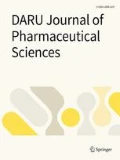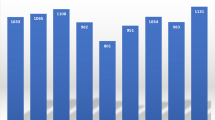Abstract
Nowadays, health insurance companies face various types of fraud, like phantom billing, up-coding, and identity theft. Detecting such frauds is thus of vital importance to reduce and eliminate corresponding financial losses. We used an unsupervised data mining algorithm and implemented an outlier detection model to assist the experts in detecting medical prescriptions suspected of fraud. The implementation ran medicine code, patients’ sex, and patients’ age variables through three successive screening steps. The proposed model is capable of detecting 25% to 100% of cases violating the standards for some medicines that are not supposed to be prescribed at the same time in one single prescription. This model can also detect medical prescriptions suspected of fraud with a sensitivity of 62.16%, specificity of 55.11%, and accuracy of 57.2%. This paper shows that data mining can help detecting potential fraud cases in medical prescriptions more quickly and accurately than by the manual inspection as well as reducing the number of medical prescriptions to be checked which will result in reducing investigators heavy workload. The results of the proposed model can also help policymakers to plan for fighting against fraudulent activities.

Detecting Medical Prescriptions Suspected of Fraud Using an Unsupervised Data Mining Algorithm
Similar content being viewed by others
References
Arash R, Hossein J, Taryn V. No evidence of the effect of the interventions to combat health care fraud and abuse: a systematic review of literature. PloS one. Public Libr Sci 2012;7(8):e41988.
Aral KD. Prescription Fraud detection via data mining: a methodology proposal. Ankara: Bilkent University; 2009.
Li J, Huang K-Y, Jin J, Shi J. A survey on statistical methods for health care fraud detection. Health care management science. Springer 2008;11(3):275–287.
Medical Fraud Detection Through Data Mining. 2002. Megaputer intelligence.
Aral KD, Güvenir HA, Sabuncuoğlu İ, Akar AR. A prescription fraud detection model. Computer methods and programs in biomedicine. Elsevier 2012;106(1):37–46.
Copeland L, Edberg D, Panorska AK, Wendel J. Applying business intelligence concepts to Medicaid claim fraud detection. J Inf Syst Appl Res 2012;5(1):51.
Busch RS. Healthcare fraud: auditing and detection guide. New York: Wiley; 2012.
Baesens B, Van Vlasselaer V, Verbeke W. Fraud analytics using descriptive, predictive, and social network techniques: a guide to data science for fraud detection. New York: Wiley; 2015.
Yoo I, Alafaireet P, Marinov M, Pena-Hernandez K, Gopidi R, Chang J-F, Hua L. Data mining in healthcare and biomedicine: a survey of the literature. Journal of medical systems. Springer 2012;36 (4):2431–2448.
Tan PN, Steinbach M, Kumar V. Introduction to Data Mining: Pearson Education. India: Chapter. 9; 2007, p. 624.
Han J, Pei J, Kamber M. Data mining: concepts and techniques. New York: Elsevier; 2011.
Olson DL, Delen D. Advanced data mining techniques. Berlin: Springer Science & Business Media; 2008.
Drug Interactions. Available from: https://online.lexi.com/lco/action/interact.
Same Classes Drugs Error in Single Prescription. Available from: https://www.drugs.com/.
Vihinen M. How to evaluate performance of prediction methods measures and their interpretation in variation effect analysis. BMC genomics. BioMed Central 2012;13(4):S2.
Author information
Authors and Affiliations
Corresponding author
Rights and permissions
About this article
Cite this article
Haddad Soleymani, M., Yaseri, M., Farzadfar, F. et al. Detecting medical prescriptions suspected of fraud using an unsupervised data mining algorithm. DARU J Pharm Sci 26, 209–214 (2018). https://doi.org/10.1007/s40199-018-0227-z
Received:
Accepted:
Published:
Issue Date:
DOI: https://doi.org/10.1007/s40199-018-0227-z




